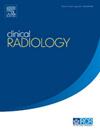国家卫生服务(NHS)成像部门与远程放射学公司同行评议和同行反馈的差异做法差距有多大?
IF 2.1
3区 医学
Q2 RADIOLOGY, NUCLEAR MEDICINE & MEDICAL IMAGING
引用次数: 0
摘要
在英国国家医疗服务体系(NHS)成像部门(NIDs)和远程放射学公司(TRCs)内评估同行评审(PR)和同行反馈(PF)的表现。材料和方法所有在皇家放射科医师学院注册的具有临床放射学审计领导的NHS提供者和在英国提供服务的主要TRCs被邀请通过问卷参与。结果6例TRCs(6/6)和73%(146/200)的NIDs有应答。所有6个trc都进行了正式的公关,并为该角色分配了时间。只有14/146(10%)的NIDs进行了正式的PR,其中4/14(29%)的NIDs没有获得工作报酬。相比之下,大多数NIDs(120/146)(82%)使用多学科团队会议(MDTM)等方法进行非正式公关,这种情况发生在113/146(77%)。104/146(71%)的NIDs和5/6(83%)的TRCs采用了同伴反馈,但只有30%至49%的NIDs和33%的TRCs使用了反思笔记的内容或将其纳入评估。36/146 (25%) NIDs和3/6 (50%)TRCs可以进行电子PF。35%的国家免疫中心和50%的国家免疫中心都有同行调节者。结论所有TRCs都进行了正式PR,但在NIDs中未得到充分利用,且报酬较低。NHS影像部门更多地依赖于非正式的公关方法,如MDTM。大多数NIDs和TRCs执行PF;然而,在反思和评价中纳入爱国主义的教育效益往往没有得到落实。信息技术系统可以提供同步的PF和同伴版主,可以提高参与度,但在大多数部门都不存在。本文章由计算机程序翻译,如有差异,请以英文原文为准。
Differential practice of peer review and peer feedback between National Health Service (NHS) imaging departments and teleradiology companies; how big is the gap?
AIM
Assessing the performance of peer review (PR) and peer feedback (PF) within National Health Service (NHS) imaging departments (NIDs) and teleradiology companies (TRCs) within the United Kingdom.
MATERIAL AND METHODS
All NHS providers with a clinical radiology audit lead registered with the Royal College of Radiologists and the major TRCs that provided services within the UK were invited to participate via a questionnaire.
RESULTS
All 6 TRCs (6/6) and 73% (146/200) of NIDs responded. All 6 TRCs performed formal PR and apportioned time for the role. Only 14/146 (10%) NIDs undertook formal PR, of which 4/14 (29%) received no remuneration for the work. In comparison, most NIDs 120/146 (82%) performed informal PR, using methods like multidisciplinary team meetings (MDTM) which occurred in 113/146 (77%). Peer feedback was practised by 104/146 (71%) NIDs and 5/6 (83%) TRCs, but only 30% to 49% of NIDs and 33% of TRCs used the content for reflective notes or incorporated it within appraisal. Electronic PF was possible in 36/146 (25%) NIDs and 3/6 (50%) TRCs. A peer moderator was present in 35% of NIDs and 50% of TRCs.
CONCLUSION
Formal PR was performed by all TRCs but underutilised within NIDs, where it was poorly remunerated. NHS imaging departments relied more on informal methods of PR, such as MDTM. The majority of NIDs and TRCs performed PF; however, the educational benefits of integrating PF within reflection and appraisal were often not implemented. Information technology systems to provide contemporaneous PF and a peer moderator could improve engagement but weren't present in most departments.
求助全文
通过发布文献求助,成功后即可免费获取论文全文。
去求助
来源期刊

Clinical radiology
医学-核医学
CiteScore
4.70
自引率
3.80%
发文量
528
审稿时长
76 days
期刊介绍:
Clinical Radiology is published by Elsevier on behalf of The Royal College of Radiologists. Clinical Radiology is an International Journal bringing you original research, editorials and review articles on all aspects of diagnostic imaging, including:
• Computed tomography
• Magnetic resonance imaging
• Ultrasonography
• Digital radiology
• Interventional radiology
• Radiography
• Nuclear medicine
Papers on radiological protection, quality assurance, audit in radiology and matters relating to radiological training and education are also included. In addition, each issue contains correspondence, book reviews and notices of forthcoming events.
 求助内容:
求助内容: 应助结果提醒方式:
应助结果提醒方式:


